For this Drip, I continue my series called…
“Cyndi - I have a question.”
… featuring a dharma question from Sarah Polley and my response. (And maybe Sarah will have a response to my response.) We are also interested in your thoughts so please chime in with comments for us!
“Cyndi - I have a question.”
My name is Sarah Polley. I’m a filmmaker, writing and living in Toronto, Canada. I’ve been studying with Cyndi Lee for about a year and a half. I was introduced to Cyndi through the incredible composer, Hildur Gudnadottir, after we worked together on the film Women Talking. Hildur is one of the people whose infectious joy and openness changes every room she walks into. For many years, she had been studying yoga and Buddhism with Cyndi and she encouraged me to join her in signing up for Lifting the Gaze, Cyndi’s online sangha.
While I have studied Buddhism and have had a daily meditation practice for almost twenty years, studying with Cyndi—which was full of sharp turns—has given me both inspiration and an anchor. I have learned so much from Cyndi about how to bring the teachings into everyday life and how to take my meditation practice off the cushion and out into the world. I have also learned how to more skillfully walk around my problems, and “see them from every angle, like a statue,” as Cyndi puts it.
Cyndi asked me if I would be interested in being a guest contributor to her wonderful newsletter, Drip, Drip, Drip, the Bucket Fills. I thought for a long time about what I might contribute and finally landed on a list of questions for Cyndi which had been rattling around in my head.
I love the way Cyndi approaches the teachings, her life, and other humans. The opportunity to have her engage with my questions over the past year and a half has been one of the great privileges of my life. So, instead of simply writing my own thoughts, I asked Cyndi if she would answer some of my gnawing questions as the sangha works our way through Becoming Bodhisattvas, Pema Chodron’s commentary on the classic Buddhist text, The Bodhisattva’s Way of Life by Shantideva.
Sarah’s Question:
When I was a lot younger and first discovered Buddhism, I spent so much time meditating that I found myself unable to write or create anything for a long time.
My head and heart had been so exploded by the teachings on impermanence, desire, and by the project of wanting to be present and in the moment, that any momentum I had for work just left me.
The urgency that had fueled my desire to create things disappeared.
And the endless noise of thoughts that usually led to me writing something got a lot quieter.
The motivation to write and make films came back in a different form eventually, but I’m nostalgic for that early time when I was learning about Buddhism and felt so accepting and present with what was, that I didn’t feel any pressing desire or need to create things.
How does one work with this intention to be present and be with what is, without compromising the urgency and inner noise that often compels one to be creative?
Cyndi’s Response:
The first time I went to a deep zen retreat was so magical. I had been invited to teach yoga during Rohatsu at Dai Bosatsu Zendo, located in upstate New York on Beecher Lake. The NY Zen Center’s property included the Beecher family house, still firmly standing on the edge of the lakeshore, where Harriet Beecher Stowe wrote Uncle Tom’s Cabin. Now, just up the way from the old house was the more recently built zendo modeled on a Japanese temple: tatami mats, rice paper walls, a wooden walking platform lining the outside walls of the meditation hall.
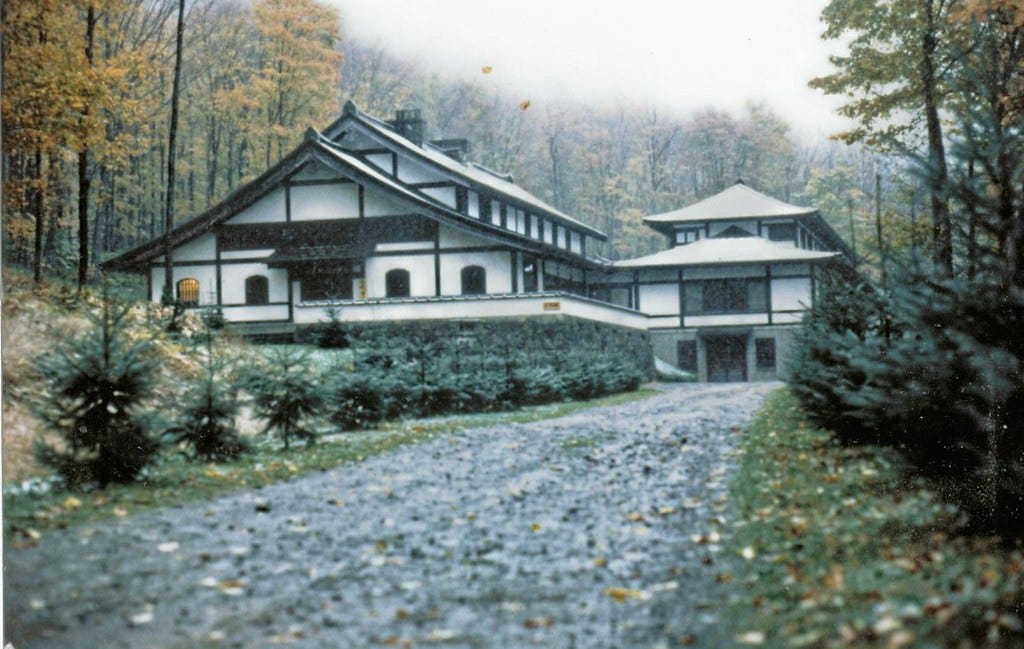
It was a long journey from Manhattan involving a bus ride, then a long wait for a taxi who drove way out into the country side and finally up a bumpy driveway. I just barely arrived on time. Two steps into the building and a monk greeted me, took me into a cloakroom, told me to pick out a robe and put it on. He neglected to tell me that since they obeyed the traditional rules of Rohatsu, there would be no electricity in the zendo and all the monks were wearing multiple layers of long underwear and sweatclothes hidden beneath their robes.
This was in December and I had arrived to snowy fields and frosty mornings. But I was so enchanted by the beauty of the zendo, the elegance of the monks and the purity of the rituals that even when I got way too cold during the first meditation sit, it felt enlightening.
I was told that you cannot move and you cannot go to the bathroom except during walking meditation periods. After the first hour I was freezing and without thinking about it, I very naturally made a small movement as if to stand up and go get a sweater. Then I remembered: no moving. And I loved that!
I thought about how we think we are adults, but really we are babies, desperate for instant gratification.
I’m cold. Fix it!
I’m hot. Fix it!
I’m hungry. Fix it!
I’m sleepy. Fix it!
No, don’t fix it.
Sit with it all.
Learn to be with discomfort.
I discovered that discomfort isn’t necessarily uncomfortable. It’s just an interesting sensation that constantly shifts and will go away on its own. No need to have an attachment or aversion drama.
Each day brought new epiphanies and beautiful sights. The morning gong went off at 4:30 a.m. and kinhin—walking meditation—began at 4:40 a.m. It started off slowly. Inhale, foot lifts. Exhale, foot steps. Then it picked up and soon we were running around the wooden walkway, my heart lifting at the sight of each monk’s wide sleeves flapping like wings as they rounded the corner ahead of me. A gorgeous ballet. By the time we sat down for the morning sit I was warm and wide awake.
On the middle day, we were given a treat and a pep talk. With two hands we cradled our tea cups while three monks filed by. The first monk spooned macha powder into our cup, the next monk poured hot water onto it, the third one gracefully inserted a bamboo whisk and spun up a frothy green tea. That night the old Roshi appeared in the dark, draped in brocade robes and attended by a monk holding a bowed stick with a lantern hanging down, like a tulip on a stem. One by one, we bowed as Roshi slowly glided down the rows, finishing with an encouragement in his samurai growl: Do your best!
One day, who knows which day it was, I was sitting on my futon on the floor sketching the bald headed monks in their robes, the zendo, the roshi, the view of cattails on wintery Beecher Lake, three nested bowls. Without a sound, my door slid open, just a few inches. A tiny box was gently pushed through and the door closed, as if by itself. When I opened the box there were four chocolates. A thank you gift from one of the retreatants for the yoga classes. I was deeply moved by how much kindness arises even when no one looks at each other and no one talks.
At the end of the week, I went back to work at my studio, where I met with a book agent who was considering taking me into her stable. She looked at the little mock-up I had put together of my drawings and smiled kindly. “Yes, well, this is nice but it has been done before. Besides, there is a book in you but it’s something else. What is it that you do here, every day, at your yoga studio?” That was how Yoga Body, Buddha Mind came to be.
The agent knew what the abbot of the zendo knew when I went back for a weekend retreat. I told him that I loved being there, that I never wanted to leave. I wondered…. if maybe we could talk about me staying there, living there? He, too, smiled kindly and said, “I think you should go back home but please, come visit us as much as you can.”
They both understood that my magical experience was not real life. So many people have this kind of honeymoon with meditation, but any monk will tell you that living in a monastery is the end of the honeymoon. All your baggage comes along with you and eventually you are face-to-face with it 24/7.
Of course, this is where the cooking happens, the real magic, the real alchemy. We sit in meditation and maybe our mind settles like a snow globe and maybe it doesn’t. Some days are boring, other sessions are loaded with fresh ideas and insights. A lot of the time meditating is just ordinary. Sit down, do the technique, ding. Get up and carry on.
In Pico Iyer’s new book, Aflame, he recalls what a senior monastic in the Camaldolese tradition said about stillness and listening: “people need the silence to hear themselves.” You probably know that our mutual friend, Hildur, sits in meditation every morning to open to whatever inspiration might bubble up before she begins her work as a music composer.
Being present doesn’t mean that what we observe is always soft or quiet. Being present includes all of what is there and what is changing and how we feel about it and how we respond to what we feel. All of that is the present.
Anyway, the whole point of the project is not what happens on the cushion but how one can begin to integrate the habit of observing one’s thoughts and reactions with the experience of off-the-cushion thoughts. When I stopped silo-ing meditation thoughts from daily life thoughts, May I Be Happy came to be.
One of the things to remember about mindfulness meditation practice is that it has two main components: being presently aware and being caught up in thoughts. That’s because our mind does just two things: it moves and it settles. We know this and yet we often get stuck on the idea that the part that is spacious and aware is better than the part where we have thoughts. Pema Chodron says that thinking that way is a subtle aggression toward who we are naturally. Prioritizing and favoring the still moments of the mind is an obstacle to recognizing the value of our thoughts. Of course, not every thought is a masterful insight. Herein lies the precision of our practice.
In the end, it’s just meditation. It’s not really magic. Or maybe it is in the way that Trungpa Rimpoche named it: Ordinary Magic. He also said that if you get bored in your practice, it means you are making progress.
I understand the yearning to go back to the honeymoon. Everyone who is married gets that. But it’s everyday attention and connecting that makes a marriage real and enduring. And sometimes, without expecting it, you and your partner can fall in love/lust over dinner one night and it feels like the honeymoon never ended. It all works best if we keep an open mind.
Practice Opportunities
PAID SUBSCRIBER ZOOM MEDITATIONS WITH ME
Last Sunday I was joined by quite a few PAID SUBSCRIBERS for a lovely meditation. I talked a bit about how meditation is a refuge, we meditated for 17 minutes, did a little stretching and answered a couple questions. All in half an hour! We agreed to do it again every other month.
The next meditation session will be Sunday, April 6 at 12-12:30 pm ET.
Retreats
Retreat is over half-way full - register soon!
This retreat is open to everyone! Our practice will focus primarily on sitting and walking mindfulness meditation, sustainable yoga, and restorative yoga. Yoga props will be available in the yoga studio and modifications will be offered for everyone. Each morning will include a short dharma talk and group discussion.
For all her wisdom as a teacher, Cyndi Lee understood intuitively that she still had a lot to learn. In spite of her success in physically demanding professions - dancer, choreographer, and yoga teacher - Lee was caught in a lifelong cycle of repetitive self-judgment about her body. Instead of the radical contentment expected in international yoga teachers, she realised that hating her body was a form of suffering, which was infecting her closest relationships - including her relationship to herself. Inspired by the honesty and vulnerability of her students, Lee embarked on a journey of self-discovery that led her outward - from the sacred sites of the parched Indian countryside to the center of the 2011 earthquake in Japan - and inward, to seek the counsel of wise women, friends and strangers both. Applying the ancient Buddhist practice of loving-kindness meditation to herself, Lee learned that compassion is the only antidote to hatred, thereby healing her heart and changing her mind. With prose as agile as the yoga sequences she creates, May I Be Happy gives voice to Lee's belief that every life arises, abides, and ultimately dissolves. By becoming her own best student, Lee internalizes the strength, stability, and clarity she imparts in her Buddhist-inspired yoga classes.
Join renowned teacher Cyndi Lee for a 4 week course designed to help you uncover your own potential for happiness, health, and easeful living. Through asana, dharma talks, meditation, exercises in self-study, and more, Cyndi will invite you to cultivate positive patterns, let go of self-created suffering, and embrace yourself totally and completely, just as you are.





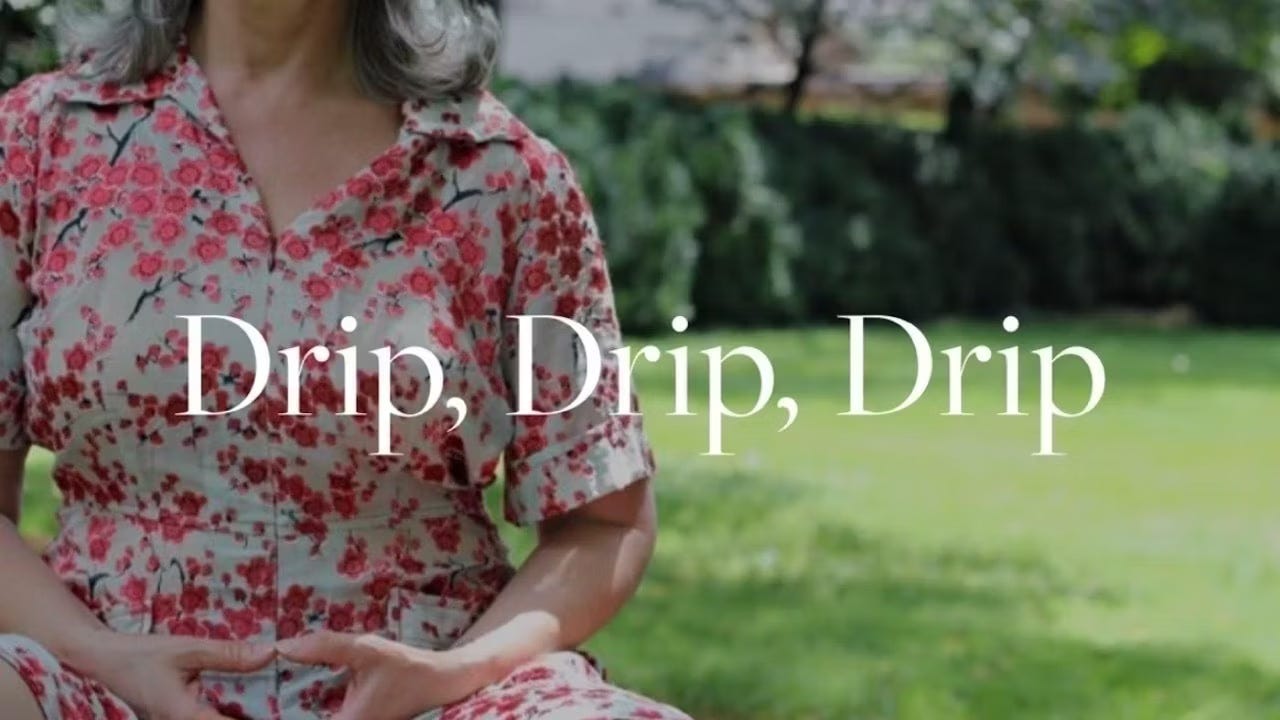

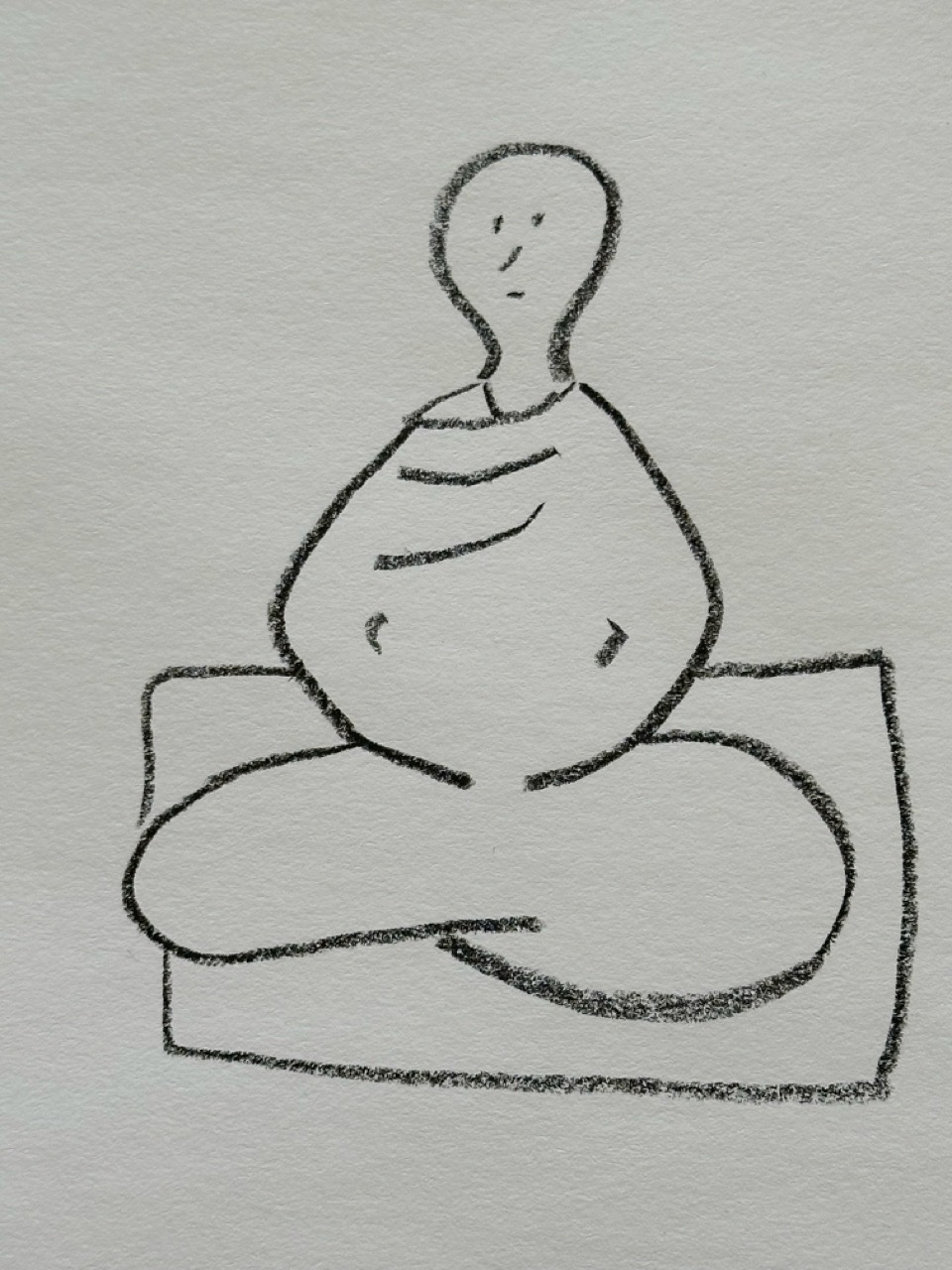
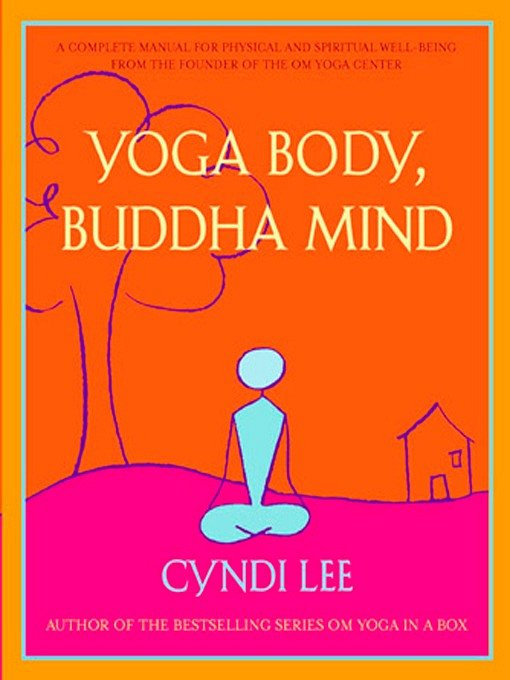
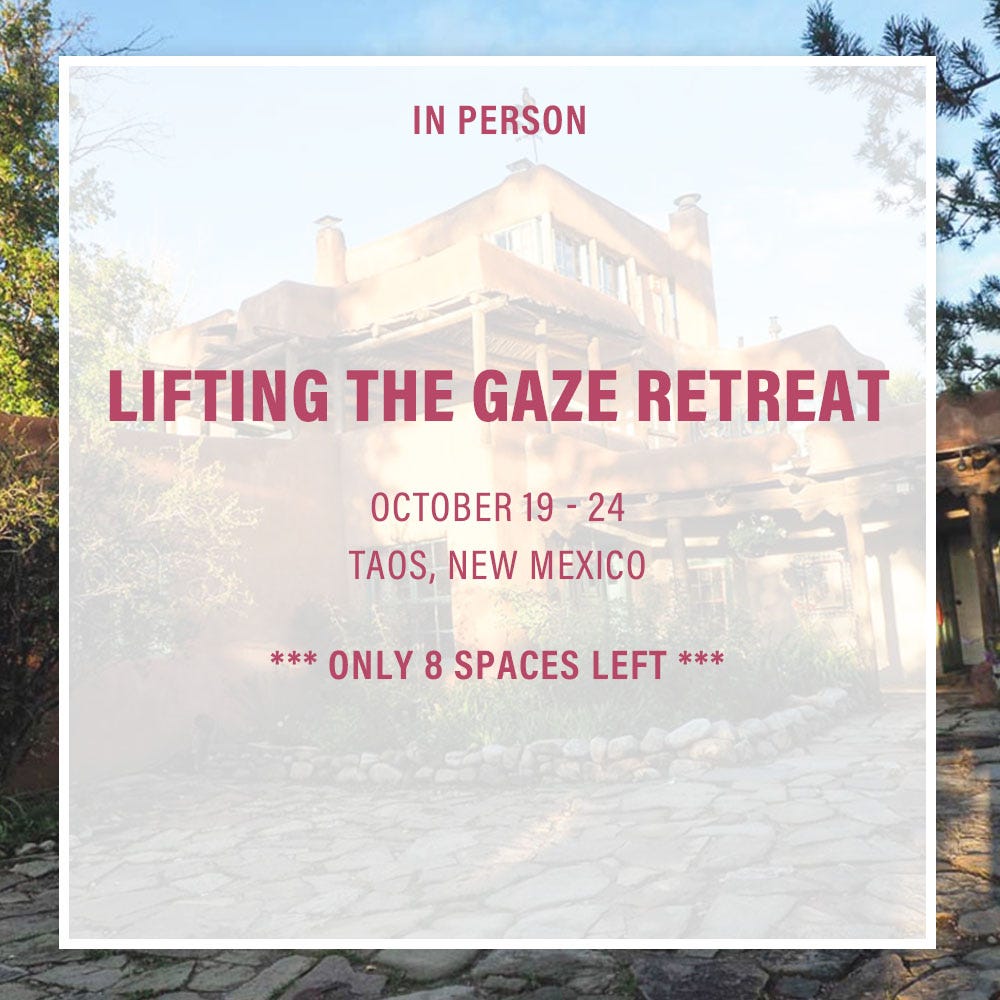
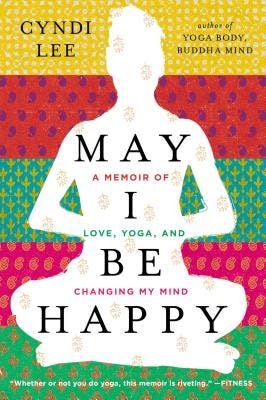

I agree, I love this format so much Cyndi! I can't wait to hear how it lands with Sarah ❤️
Saving this quote:
"I’m cold. Fix it!
I’m hot. Fix it!
I’m hungry. Fix it!
I’m sleepy. Fix it!
No, don’t fix it.
Sit with it all.
Learn to be with discomfort.
Love the question & answer format, that provides another’s perspective for more fully understanding Cyndi’s answer… and … hopefully … after it blooms, Sarah’s story of how Cyndi’s answer nourished her life.